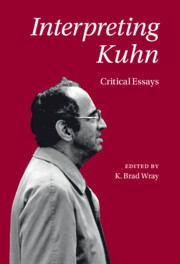Book contents
- Interpreting Kuhn
- Interpreting Kuhn
- Copyright page
- Dedication
- Contents
- Figures
- Contributors
- Acknowledgments
- Abbreviations
- Introduction
- Part I Foundational Issues
- Part II Three Core Concepts
- Chapter 5 Mop-Up Work
- Chapter 6 Kuhn and the Varieties of Incommensurability
- Chapter 7 Reassessing the Notion of a Kuhnian Revolution
- Part III Kuhnian Themes
- Bibliography
- Index
Chapter 5 - Mop-Up Work
from Part II - Three Core Concepts
Published online by Cambridge University Press: 25 June 2021
- Interpreting Kuhn
- Interpreting Kuhn
- Copyright page
- Dedication
- Contents
- Figures
- Contributors
- Acknowledgments
- Abbreviations
- Introduction
- Part I Foundational Issues
- Part II Three Core Concepts
- Chapter 5 Mop-Up Work
- Chapter 6 Kuhn and the Varieties of Incommensurability
- Chapter 7 Reassessing the Notion of a Kuhnian Revolution
- Part III Kuhnian Themes
- Bibliography
- Index
Summary
Thomas Kuhn conceived of himself, in the project most notably realized in the Structure of Scientific Revolutions, as presenting and supporting a novel image of science grounded in both its history and practice. Central to Kuhn’s new image of science is the idea that there are two distinct modes of scientific inquiry, its normal mode and its extraordinary mode. These modes show up along several dimensions of Kuhn’s image, including, but not limited to, the historical development of science, the cognitive strategies appropriate for its success, its social organization, and in the ‘location’ and nature of its content. This chapter attempts to capture and convey Kuhn’s notion of normal science by analyzing the three metaphors that he uses to introduce and explain the significance of the normal mode in his novel image of science.I will then introduce a metaphor of my own for understanding Kuhn’s importance, particularly by way of the notion of normal science, for contemporary work in the philosophy of science.
Keywords
- Type
- Chapter
- Information
- Interpreting KuhnCritical Essays, pp. 85 - 104Publisher: Cambridge University PressPrint publication year: 2021
- 1
- Cited by

